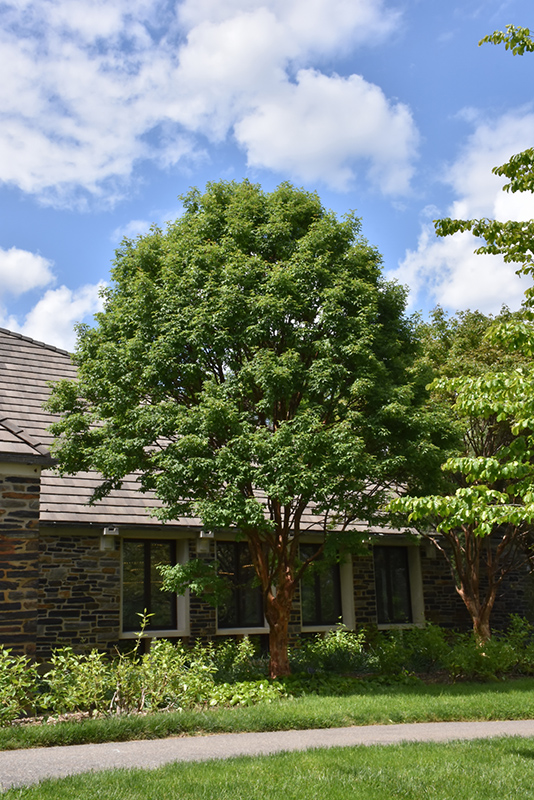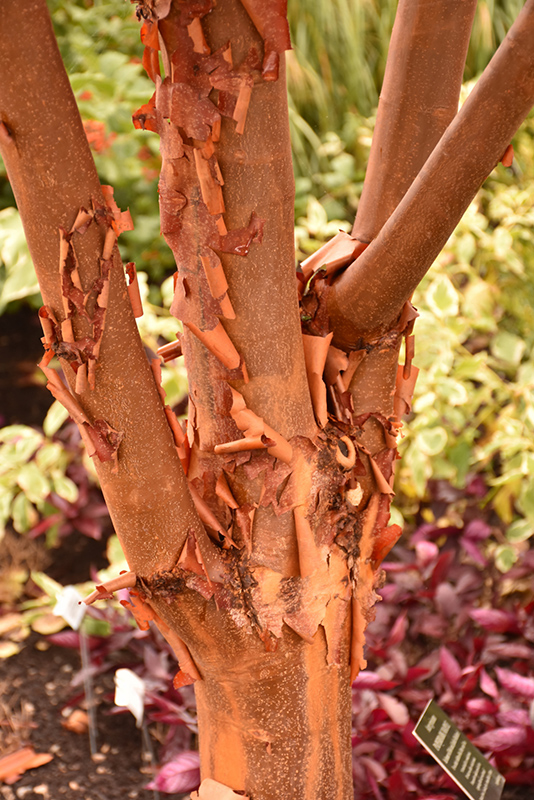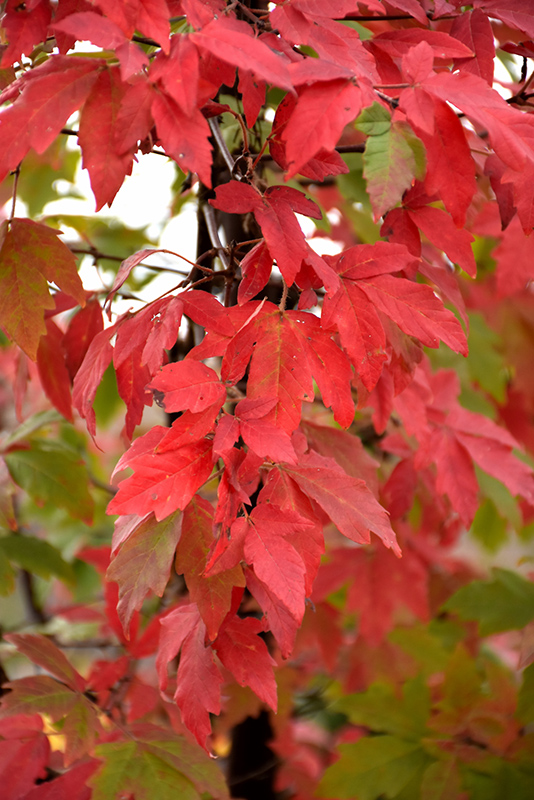Digging deeperPlant Library
Height: 25 feet
Spread: 15 feet
Sunlight:
![]()
![]()
Hardiness Zone: 4
Description:
This small ornamental tree is renowned for its exfoliating (peeling) bark in cinnamon red, pink and tan, along wth good fall color; an extremely high value accent tree for the winter landscape
Ornamental Features
Paperbark Maple has dark green deciduous foliage on a tree with an oval habit of growth. The compound leaves turn outstanding shades of orange and antique red in the fall. The peeling antique red bark is extremely showy and adds significant winter interest.
Landscape Attributes
Paperbark Maple is a multi-stemmed deciduous tree with a shapely oval form. Its average texture blends into the landscape, but can be balanced by one or two finer or coarser trees or shrubs for an effective composition.
This is a relatively low maintenance tree, and should only be pruned in summer after the leaves have fully developed, as it may 'bleed' sap if pruned in late winter or early spring. It has no significant negative characteristics.
Paperbark Maple is recommended for the following landscape applications;
- Accent
- Shade
Planting & Growing
Paperbark Maple will grow to be about 25 feet tall at maturity, with a spread of 15 feet. It has a high canopy with a typical clearance of 6 feet from the ground, and should not be planted underneath power lines. As it matures, the lower branches of this tree can be strategically removed to create a high enough canopy to support unobstructed human traffic underneath. It grows at a slow rate, and under ideal conditions can be expected to live for 80 years or more.
This tree does best in full sun to partial shade. It prefers to grow in average to moist conditions, and shouldn't be allowed to dry out. It is not particular as to soil type or pH. It is somewhat tolerant of urban pollution. This species is not originally from North America.
A NetPS Plant Finder tool
This Plant Library is for informational purposes only. We may or may not carry the items listed. During many times of the year, we may carry many more plants in our store than are listed in the Plant Library. Please contact us directly at 303-690-4722 or visit our store for current availability and for assistance.


